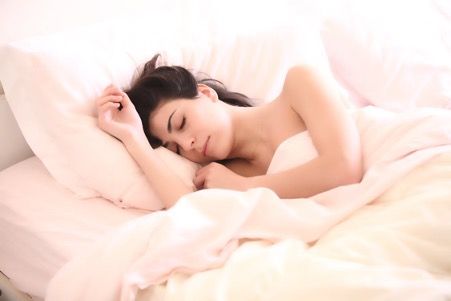
TikTok is a well-known source of life hacks, hints, and tips on a huge variety of topics, including sleep. From brain tapping to making use of pressure points, there are a whole host of methods that people suggest doing to help you get to sleep – but do they actually work, and, if so, how?
We had a look at the 5 most liked and shared obscure sleep hacks that people have engaged with on TikTok. Then, we teamed up with sleep expert Dr Daisy Mae to debunk them.
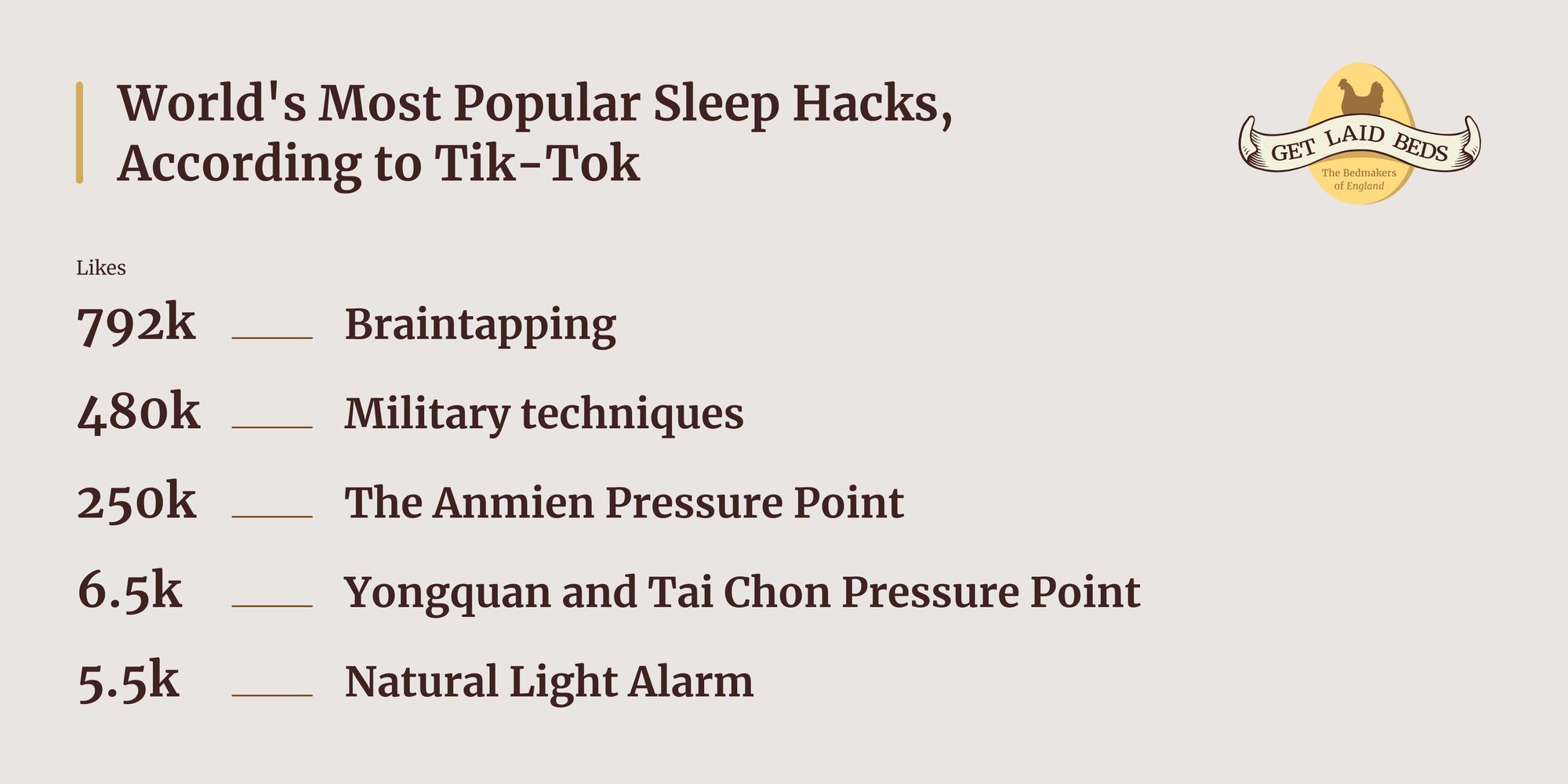
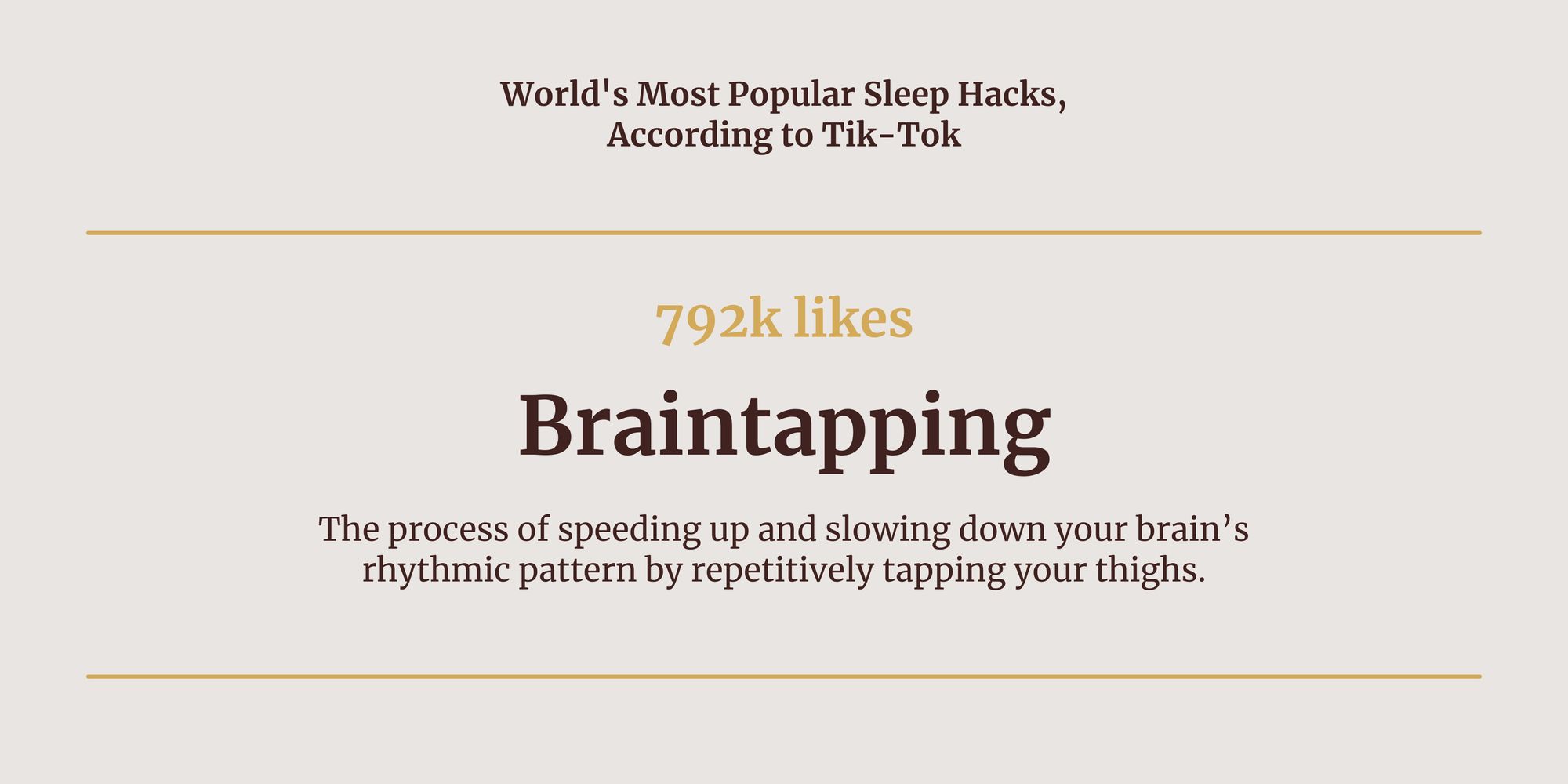
Brain tapping is by far the most engaged with sleep hack on TikTok, with more than 792k likes on the platform. With that in mind, you may be wondering what is brain tapping?
Brain tapping is a recently recognised technique that combines CBT (cognitive behavioural therapy) with somatic stimulation. It utilises some of the principles of Traditional Chinese Medicine and kinesiology and involves stimulating the body to get it ready for sleep as something distinctly separate from the mind.
You need to tap 7-9 times around the eyes, below the nose, below the lips, on the collarbone, under the arm, and on top of the head. While you do this, you need to make statements out loud about what’s distressing you and rate it on a severity scale of 1-10. This is the CBT section of the process.
Here’s what Dr Daisy Mae had to say about brain tapping:
“Perhaps you’re sceptical that brain tapping can help you sleep, but in fact, there is some scientific evidence to support it. In 2013, the journal Psychology published a review of the medical evidence about a group of Emotional Freedom Techniques (EFTs), which included brain tapping. This included 23 randomised controlled trials and 17 personal studies.”
While brain tapping is still ultimately a concept in its infancy, there’s evidence to support that it could be something to consider if you’re struggling to nod off.
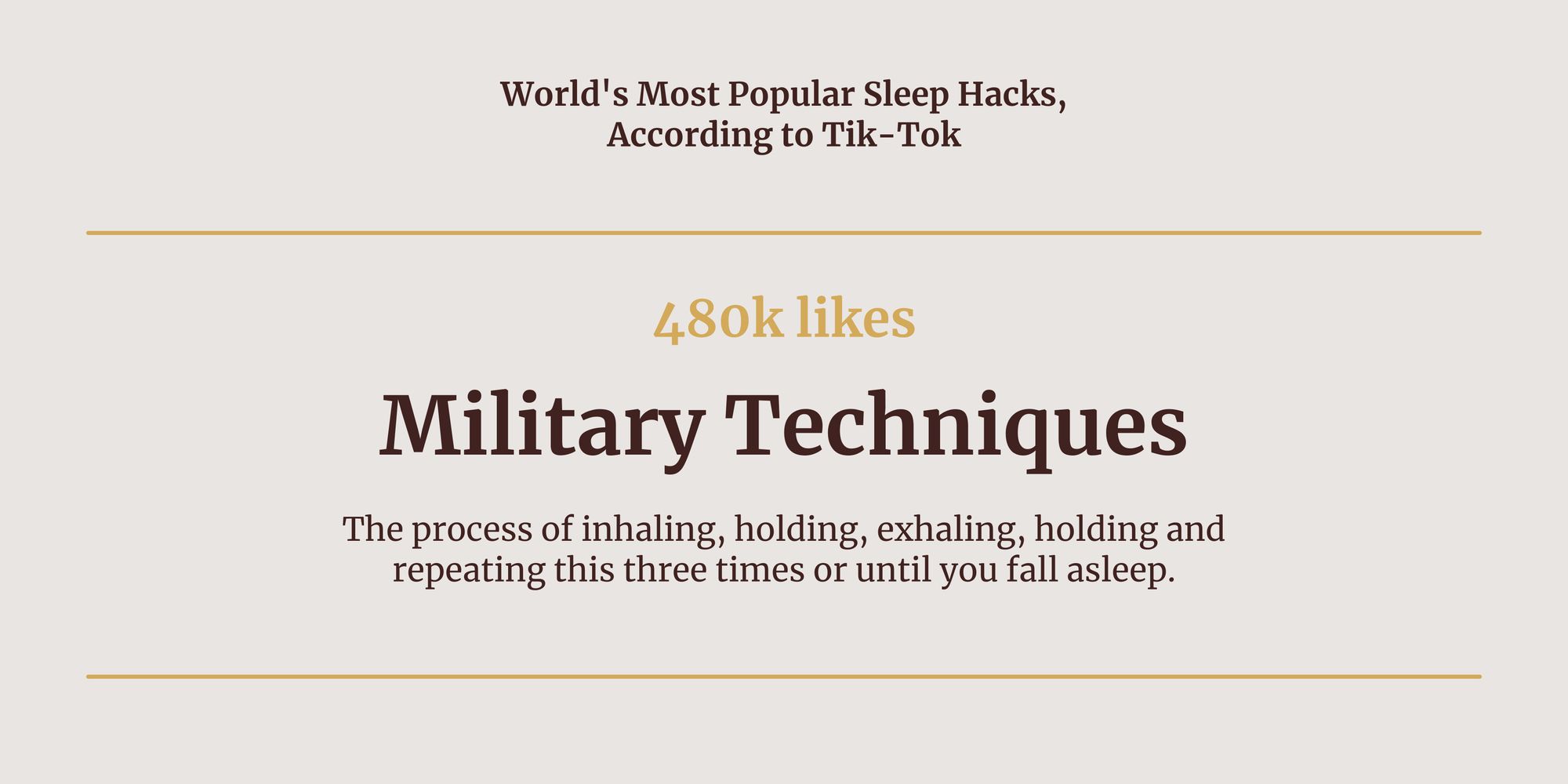
According to the US Army, this Military sleeping technique works for 96% of people who try it. Perhaps that’s why it has over 480k likes on TikTok, and 148k shares.
The Military technique involves consciously relaxing different groups of muscles within the body in a stepwise fashion, as follows:
1. Starting with the facial muscles and working down the body, relax your muscles. From the inside of your mouth to the tops of your fingers, consciously relax each muscle.
2. Control your breath by inhaling deeply, holding it, exhaling, and holding again. Repeat this throughout the relaxation process.
3. When you’ve worked through all your muscles, imagine a relaxing scene, or repeat the phrase ‘don’t think’ calmly until you fall asleep.
Dr Daisy Mae explains:
“The theory behind the Military Sleeping Technique is that the progressive muscle relaxation induces the onset of sleep. With the Military Technique, the aim is for sleep onset within 2 minutes. It is a learned technique, which took initial recruits 6 weeks to master, so anyone trying it needs to be patient and persistent.
“For the technique to be successful, you do need to engage fully with the process. When you breathe in deeply and slowly, you are activating the parasympathetic nervous system, the body’s rest and relaxation pathway. You will feel a sense of calm, with lowered levels of anxiety, which is often at the root of insomnia. As you focus your thoughts on relaxing your muscles, you will be disengaging yourself from the anxieties of the day and feeling more peaceful and relaxed.”
The army need to be able to sleep wherever and whenever they can, so having a technique that helps them fall asleep quickly is paramount. If this technique is one that works for them, it’s likely to be helpful for other insomniacs, too.
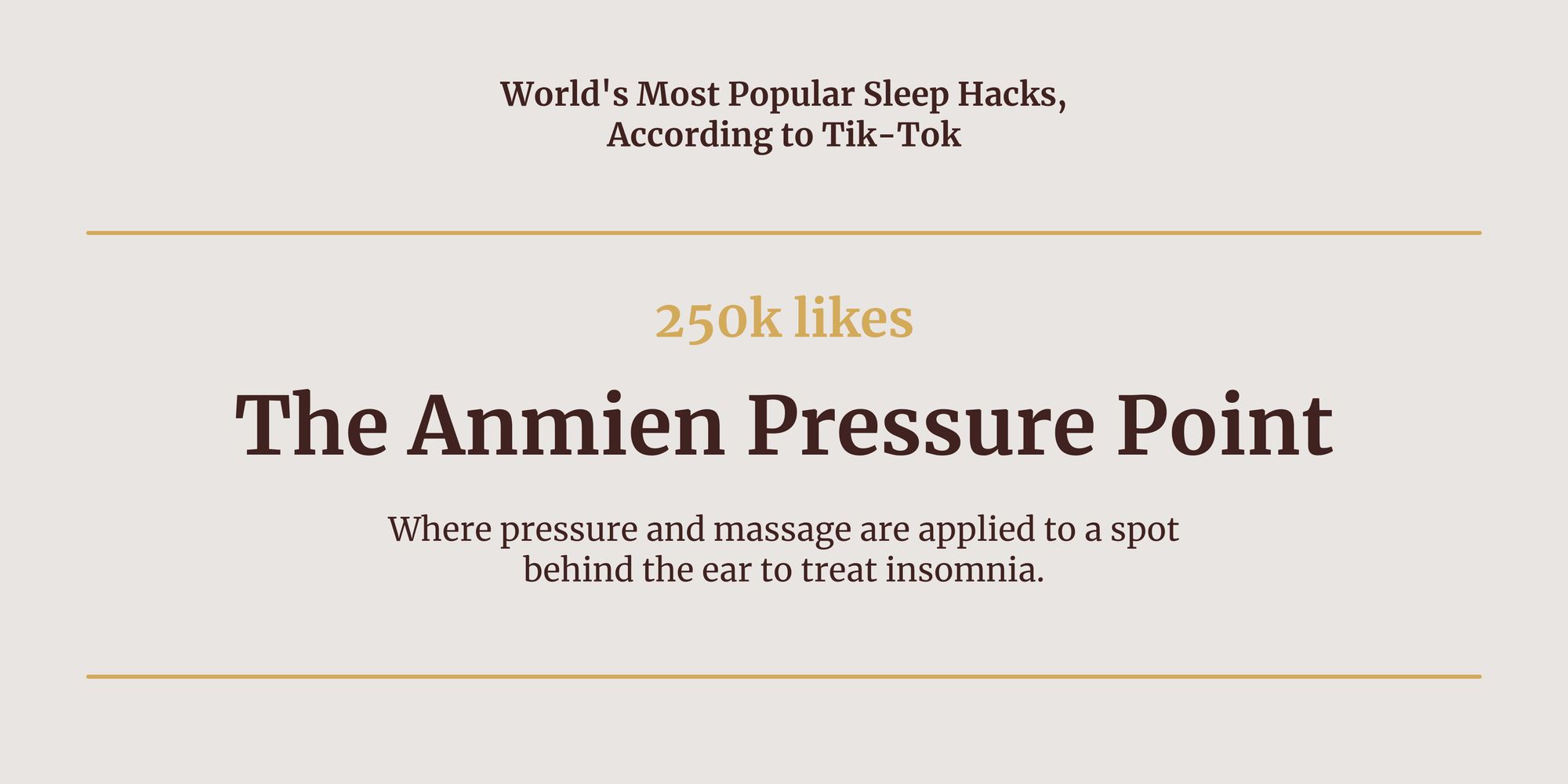
Acupuncture and acupressure are techniques of ancient Chinese Medicine, and revolve around the concept of vital energy, known as Qi (pronounced ‘chee’). Low levels of Qi can result in symptoms like insomnia and fatigue, which can be resolved by applying pressure in the right places and resuming the flow of Qi.
“Studies have shown that exerting pressure on pressure points activates the myelin sheaths that surround small peripheral nerves,” says Dr Daisy Mae. “These then transmit impulses to the higher nerve centres in the brain, including the hypothalamus and the pituitary, and the spinal cord.
“Anmien is a pressure point found 1cm behind the midpoint of the ear, over the skull. It is one of the suggested pressure points for improving sleep. Try pressing on the area on one or both sides for thirty seconds when trying to get to sleep.”
Utilising the anmien pressure point has become a popular technique to induce sleep on TikTok, with 250k likes and 10k shares. That’s not surprising, as it’s an easy way to try out acupuncture techniques on your own at home, without the need for any needles or other equipment.
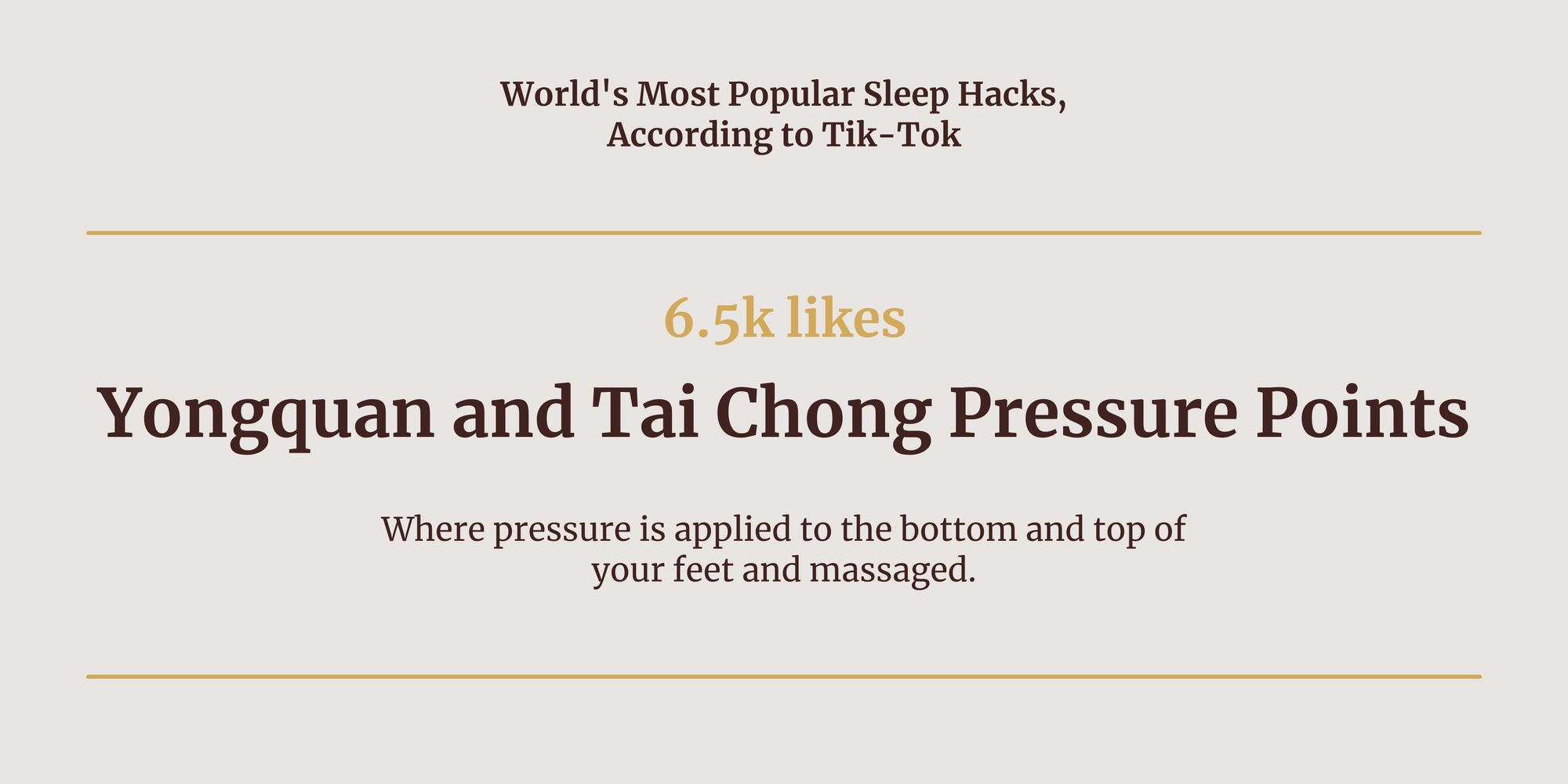
These pressure points are located in the feet and are commonly used in reflexology. Engaging them properly to help you fall asleep can be done with a simple foot massage, applying pressure with the thumb and forefinger to specific areas of the feet. But do foot rubs help you sleep?
“Good quality medical evidence to support reflexology is sparse, but there are some small studies to support it. In fact, during reflexology, EEG studies have shown alterations in brain wave patterns usually seen in sleep. The onset is rapid, within minutes of starting treatment.
“Reflexologists often use essential oils, aromatherapy, and subdued lighting – all of which induce relaxation – making it difficult to single out the specific effects to pressure on the pressure points as therapeutic. We know there is tremendous power simply in the action of human touch.”
This technique doesn’t have as much exclusive evidence to support it. Another drawback of the technique is that it can be difficult to effectively perform reflexology on yourself to a high enough degree that you’ll fall asleep. There is, however, still plenty of traction for it on TikTok, with 6.5k likes and 800 shares.
If you’re looking to engage with pressure points as a method of falling asleep, you might be better off trying anmien point, instead.
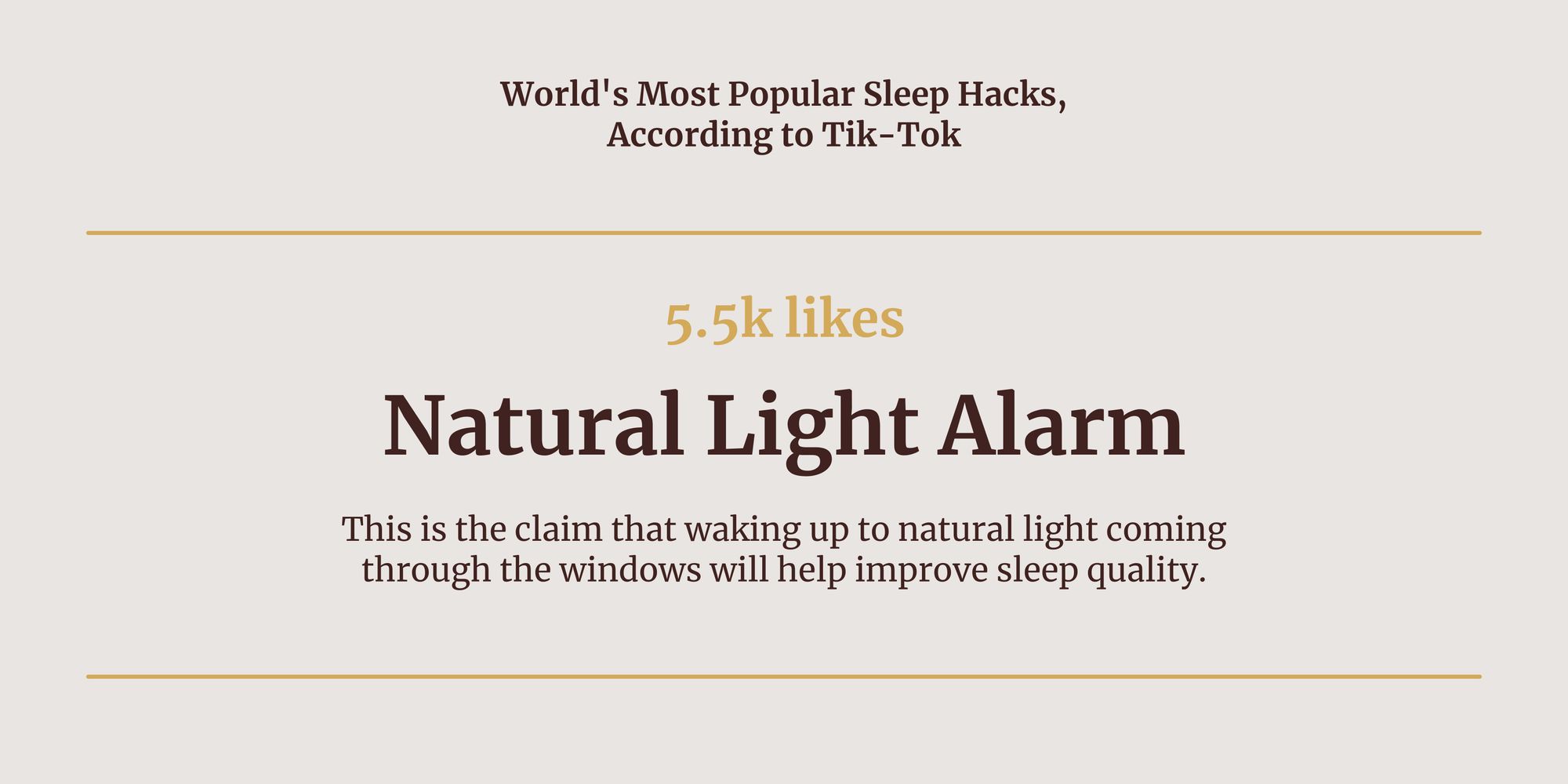
Number 5 on our list with 5.5k likes is the ‘natural light alarm’, a technique that claims waking up to natural light will improve your quality of sleep. The opposite has actually proven true; that blackout curtains improve sleep, rather than having no curtains at all. So, does daylight help sleep? Well, despite blackout curtains being beneficial, it’s also true that once you’re awake, exposure to natural daylight is crucial for getting to sleep the following night.
“Your body relies on its own Circadian rhythms – the 24-hour body clock – to know when to sleep and when to wake up. This body clock is a group of specialised cells called the suprachiasmatic nucleus (SCN) situated in the hypothalamus, behind the eyes”, says Dr Daisy Mae.
“Blackout curtains keep light off the retina and are thought to help maintain melatonin levels. However, the type and intensity of light are also important. The brain needs to appreciate the difference between light and darkness. And natural daylight is required – artificial light is far weaker.
“As soon as you wake up, getting outside for half an hour, preferably for an early morning walk, is one of the best ways to help get to sleep at night-time. If you can’t physically go outside, first thing in the morning, open the blinds or curtains wide, open the windows if possible, and expose yourself to natural light.”
You could also try using a light box for some time in the morning, instead. This is a high intensity (UV free) artificial light. Sitting in front of this for half an hour every morning can stimulate the SCN, helping to reset the body clock.
Whichever technique works best for you, it’s also true that you’ll find it much easier to fall asleep if you’ve got a comfortable bed.
At Get Laid Beds, our bespoke wooden bed frames are handmade for each individual buyer, meaning you can add your own customisations to make your bed frame unique to you. Our beds are available in 17 different colour and hardwood finishes, and in any size from the small single to super Caesar, including custom sizes thanks to our made to measure service.
Get in touch with our experts today to find out more.
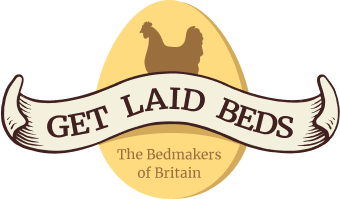
WE VALUE YOUR PRIVACY
We use cookies to enhance your browsing experience, serve personalised ads or content, and analyse the traffic with 3rd party services. By clicking ‘Accept’, you consent to our use of cookies, visit our Privacy Policy and our Cookie Policy for more info.
Please select one of the delivery countries below or navigate to our UK website for UK delivery options.
Note: International shipping prices are charged per bed rather than per order. This is due to the bulky nature and weight of these products.